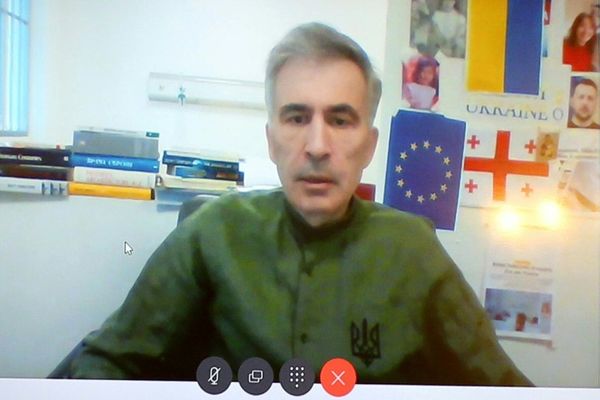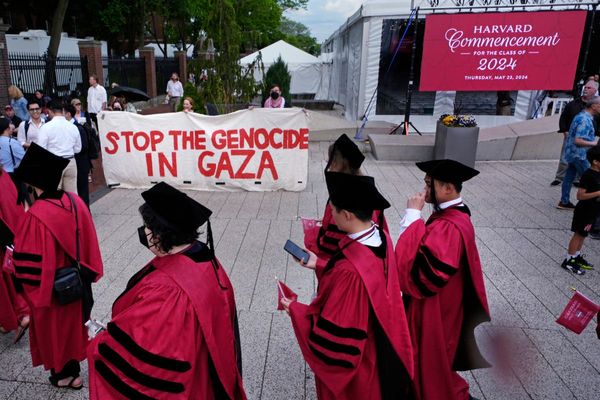
Nancy Faraj was eating lunch with her family at her home in the village of Bint Jbeil in southern Lebanon when Israel bombed the house next door, killing two of her neighbours.
Within hours she and her family had grabbed a handful of possessions and headed north-west for the city of Tyre, 50 miles (80km) south of Beirut, where they are now living in a school with several hundred others.
For Faraj, 25, it marks the second time she has been displaced by war with Israel. In the 2006 conflict, when she was seven, she fled with her mother to Beirut. Now she has been displaced again, this time with her own children.
“We came here three weeks ago. Up until then the bombing was away from the village and we felt relatively safe. But after they hit my neighbour’s house the decision was immediate.
“It feels like the fighting is getting worse,” she added, saying that the family no longer wanted to live close to the boundary.
In three months, according to figures released last week by the International Organization for Migration, about 76,000 people have been driven from southern Lebanon.
Local authorities in Tyre, a pretty seaside city with ancient ruins, are registering between 200 and 300 newly displaced people each day.
A short drive south along roads lined with citrus and palm groves, vehicles become increasingly scarce, barring the patrolling vehicles of Unifil, the UN observer mission.
In the small town of Naqoura, 1.5 miles from the boundary with Israel, a pile of tangled rubble is all that remains of a house hit in an Israeli strike last week. Surrounding homes and businesses are without windows and peppered with shrapnel.
An Israeli drone buzzes nearby. It is a reminder of the risk that has become almost constant in the south.
The handful of people who remain in Naqoura are palpably anxious and unwilling to speak or be identified.
In a mini-market next to the destroyed house, a man is cleaning up his ruined business, whose windows have been blown out. He left, he said, two minutes before the strike, which killed his cousins.
A young man on a moped appears and checks the Guardian’s paperwork. He leaves and then returns after a few minutes delivering a message from Hezbollah asking reporters to leave.
In three months the violence here has taken on its own logic. The formal situation is that the “cessation of hostilities” defined by UN resolution 1701, which brought an end to the 2006 war, is still in place.
Despite what has been happening on the boundary since 8 October, when Hezbollah began what was at first a limited campaign of firing into Israel in support of Hamas’s war in Gaza, there has been no declaration of war and ambiguous signals from both sides about their intentions.
The reality, however, is that about 10,000 “trajectories” have been tracked across the blue line separating the two countries – munitions both large and small, fired by both sides in exchanges that have become constant, according to observers.
As the geographical spread of the boundary fighting has expanded, so too has the size of the weapons being used and the growing importance of the targets.
In the past week alone, Hezbollah struck a major Israeli airbase at Mount Meron, while Israel has struck command posts and – on the day of the Guardian’s visit to the south – killed a senior commander in Hezbollah’s elite Radwan force.
“Since the end of the war in 2006 we have definitely not seen anything like this,” said Kandice Ardiel, a spokesperson for Unifil, whose main base is next to Naqoura.
“We’ve seen individual instances of a few days of tension, but we have not seen anything so protracted and violent. It is unprecedented. And the 2006 war was over in a month. This has been happening on a daily basis for three months, even if the affected area is smaller.
“While both sides have given signals they do not want escalation, but are prepared for escalation if it does happen, the longer this goes on the more likely that escalation is.”
For those who have been driven out of the south, many of them farmers, the future for their families is uncertain.
Mustafa Said, who grows tobacco, left earlier in the conflict from the village of Beit Lif.
“Our house was very close to bombing. My children were crying and not eating. After four days of bombing we went to another village where my wife’s family is from. It was the same. More bombing. That’s when we decided to come to Tyre. Everyone is leaving. The house of my brother and my daughter have both been damaged.”
“I don’t support Hamas,” he added. “If the Israelis want to kill Hamas that is their business. If they want to fight, it shouldn’t be us being shot and bombed. This is not Lebanon’s war. Most Lebanese they are not happy with the situation. We don’t want to be part of it.”
He said the international community could pressure Israel and stop the conflict. He believed Lebanon was being sucked in as Israel had struggled to meet its war aims against Hamas in Gaza.
“No one is a winner in war. I have missed planting my crops. And I’m really worried about my children. The children on both sides have a right to live a normal life and have an education.”
Even in Tyre he did not feel safe.
“Yesterday Israeli jets flew over the city making sonic booms and my children were really scared.”
Mortada Mhanna, a disaster risk reduction manager working with internally displaced people in Tyre, said: “Our estimate is that around 90% of the people in the southern border villages have left.
“In our region we have over 22,000 displaced and yesterday alone we made 286 new registrations.
“The majority are living with family and friends or in empty apartments that have been donated. But it is getting worse for people as the conflict drags on. People are feeling psychological and money problems. Those who could afford to rent are running out of money and we’ve seen people who were displaced to Beirut now coming back to Tyre because it is easier to get help here,” he said.
“People here are afraid that the region being attacked is [getting] wider and they are worried that Tyre [which was heavily shelled in 2006] might become a target.”







